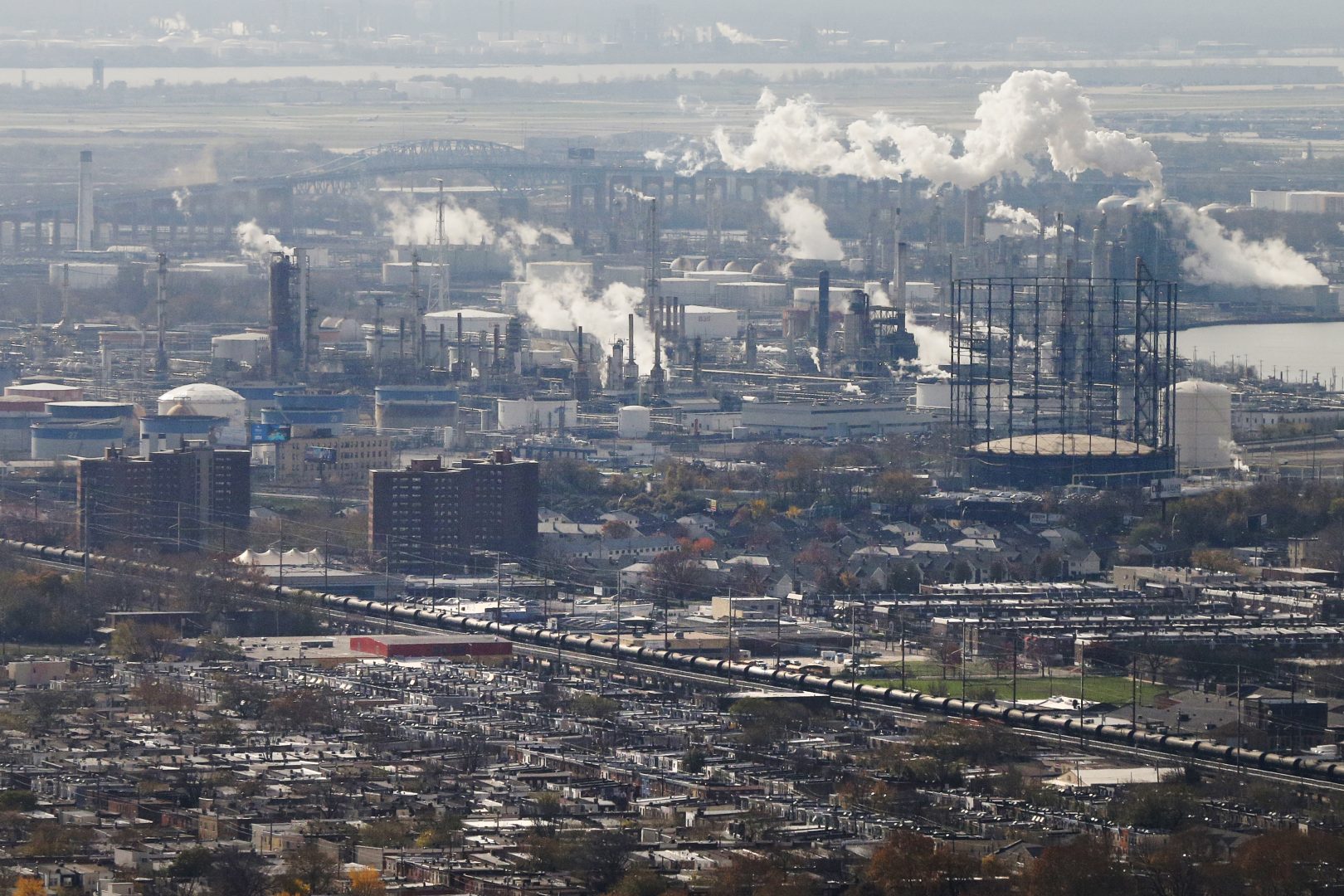
FILE PHOTO: A refinery, homes and tank cars is seen Tuesday, Nov. 24, 2015, in Philadelphia.
Matt Rourke / AP Photo

FILE PHOTO: A refinery, homes and tank cars is seen Tuesday, Nov. 24, 2015, in Philadelphia.
Matt Rourke / AP Photo

Matt Rourke / AP Photo
FILE PHOTO: A refinery, homes and tank cars is seen Tuesday, Nov. 24, 2015, in Philadelphia.
(Harrisburg) — Gov. Tom Wolf’s administration will start working to bring Pennsylvania into a regional consortium that sets a price and caps on greenhouse gas emissions from power plants, part of the Democrat’s agenda to fight climate change.
Wolf will make a formal announcement Thursday that he is ordering a start to the process of joining the Regional Greenhouse Gas Initiative, administration officials said.
The move could draw pushback in the Republican-controlled Legislature, if not a court challenge, from owners of the worst-polluting power plants in the nation’s No. 3 electric power state who could be required to pay hundreds of millions of dollars to the state annually.
Environmental advocates applauded joining the consortium of northeastern and mid-Atlantic states as an important step.
“It’s got a track record of success, it’s time-tested and it has had bipartisan support,” said David Masur, executive director of Philadelphia-based PennEnvironment.
With dozens of coal and natural gas-fired power plants, Pennsylvania would be, by far, the biggest emissions state in the consortium. Its power plants emit about 92 million tons a year compared with the consortium’s 2019 cap of 80.2 million tons.
Wolf’s aides have approached top lawmakers in the Republican-controlled Legislature in recent months about passing legislation to authorize the move, without success. However, Wolf’s administration also has maintained that it can write regulations for the cap-and-trade program under its existing authority to regulate air pollution.
But spending the money raised by the credits would require legislation, administration officials acknowledge, and that could set up a fight in the Capitol over how to spend it.
In consortium states, owners of power plants fueled by coal, oil or natural gas with a capacity of 25 megawatts must buy a credit for every ton of carbon dioxide they emit. That gives them an incentive to lower their emissions while making non-emitting plants _ such as nuclear power plants, wind turbines and solar installations _ more cost competitive in power markets.

A collection of interviews, photos, and music videos, featuring local musicians who have stopped by the WITF performance studio to share a little discussion and sound. Produced by WITF’s Joe Ulrich.
The days of journalism’s one-way street of simply producing stories for the public have long been over. Now, it’s time to find better ways to interact with you and ensure we meet your high standards of what a credible media organization should be.